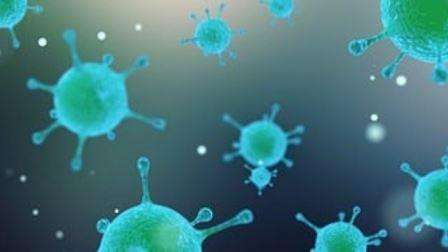Q- Name two techniques which can help in early detection of bacterial/viral infection much before the appearance of disease symptoms.
Answer- The two main techniques which are used to detect bacterial/viral infection at an early time before the appearance of disease symptoms are Polymerase Chain Reaction (PCR) and Enzyme Linked Immuno Sorbent Assay (ELISA).
We hope now you understood that name two techniques which can help in early detection of bacterial/viral infection much before the appearance of disease symptoms. If you didn’t know well about Polymerase Chain Reaction (PCR) and Enzyme Linked Immuno Sorbent Assay (ELISA) then you can refer to the headings given below, In the following paragraphs we are going to tell you about both Polymerase Chain Reaction (PCR) and Enzyme Linked Immuno Sorbent Assay (ELISA)
Enzyme Linked Immuno Sorbent Assay (ELISA)
The Enzyme-linked immuno sorbent assay (ELISA) is the most commonly used analytical biochemistry assay, which was first described by Peter Perlmann and Eva Engvall in the year 1971. The Enzyme Linked Immuno Sorbent Assay uses a solid-phase type of enzyme immunoassay which is called EIA in short to detect the presence of a ligand in a liquid sample using antibodies directed against the protein to be measured.
Enzyme Linked Immuno Sorbent Assay or ELISA has been used as a diagnostic tool in plant pathology, medicine, and biotechnology, as well as a quality control check in various industries. It is the early technique that was used to detect viral or bacterial infections in a patient’s body.

Experiments in ELISA
In the most simple form of an Enzyme Linked Immuno Sorbent Assay (ELISA), antigens from the sample to be tested are attached to a surface. Then, a matching antibody is applied over the surface so it can bind the antigen. This antibody is linked with an enzyme and then any unbound antibodies are removed from it. In the last step, a substance containing the enzyme’s substrate is added to it. And If there was binding, the subsequent reaction produces a detectable signal, most commonly a color change. There are more chances of a change in color.
Process in Enzyme Linked Immuno Sorbent Assay
We all know that Enzyme Linked Immuno Sorbent Assay (ELISA) is a very long process which can help in early detection of bacterial/viral infection much before the appearance of disease symptoms. So we are telling you the process of Enzyme Linked Immuno Sorbent Assay. So, while performing an Enzyme Linked Immuno Sorbent Assay (ELISA) at least one antibody with specificity for a particular antigen. A sample of an unknown amount of antigen is taken to immobilize on a solid support. This can usually be a polystyrene microtiter plate.
Once the antigen is immobilized, the detection antibody is added to it, that help in forming a complex with the antigen. The detection antibody can be covalently linked to an enzyme or in the other case it can itself be detected by a secondary antibody that is linked to an enzyme through bioconjugation. Between each step of this whole process, the plate is typically washed using a mild detergent solution, this help in removing any proteins or antibodies that are non-specifically bounded to it.
After the final wash, the plate is developed by adding an enzymatic substrate to produce a visible signal on it, that indicates the quantity of antigen in the articular sample which was taken for this experiment.
Polymerase Chain Reaction (PCR)
Polymerase Chain Reaction which is also known as PCR in short form, it is a revolutionary method that was developed by Kary Mullis in the 1980s. Polymerase Chain Reaction (PCR) is based on the usage of the ability of DNA polymerase to synthesize a new strand of DNA complementary to the offered template strand. As we all know that DNA polymerase can add a nucleotide only onto a preexisting 3′-OH group, so it requires a primer to which it can add the first nucleotide.
These requirements make it possible to delineate a specific region of template sequence that the researcher wants to amplify in this process. At the end of the Polymerase Chain Reaction reaction (PCR reaction), the specific sequence will be accumulated in billions of copies (amplicons).
Here this article is completed. We hope all of you now understood the answer of ‘name two techniques which can help in early detection of bacterial/viral infection much before the appearance of disease symptoms’. If yes so tell us your queries in the comment box and do not forget to see more such interesting articles from the link given below.
1. Indian Economic development class 12 Sandeep Garg book for free
2. Sandeep Garg Macroeconomics class 12 book pdf download
Tags: name two techniques which can help in early detection of bacterial/viral infection much before the appearance of disease symptoms
